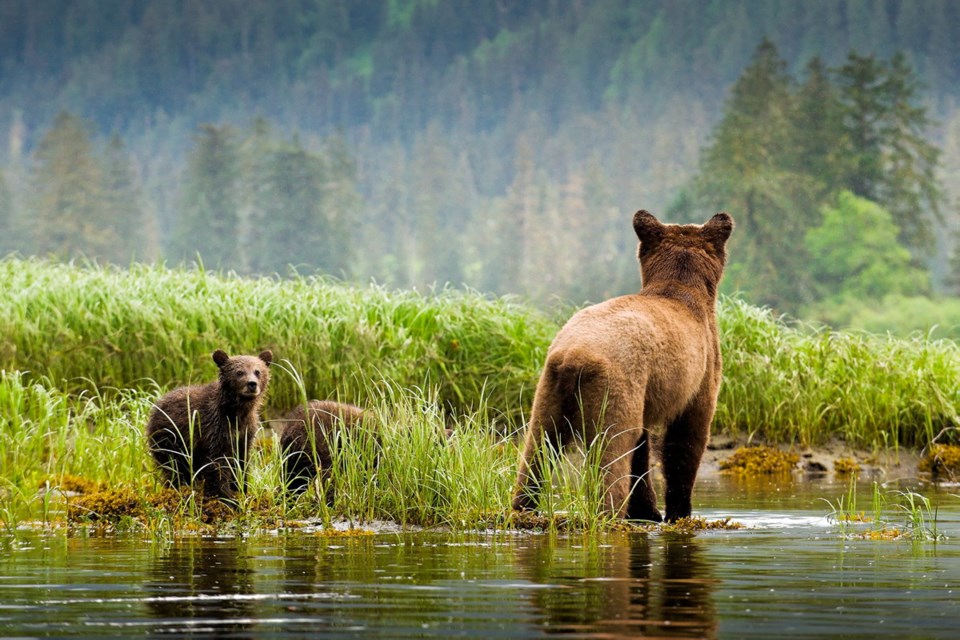Trophy hunting is threatening B.C.’s grizzly bear populations, with legally sanctioned hunters regularly killing more animals than allowed under the province’s own management policy, scientists from the Raincoast Conservation Foundation, the University of Victoria and Simon Fraser University have found.
A study published online today in the internatonal journal Plos One questions the B.C. government’s assertion that “sound science” is used to manage the grizzly hunt.
“Given widespread public disapproval for this ethically and culturally unacceptable trophy hunt, current provincial management of grizzlies seem to be driven more by bad political science than good biological science,” said Chris Genovali, executive director of Raincoast Conservation Foundation.
The scientists looked at government data from 2001 to 2011 to determine if the province’s grizzly management of human-caused kills stayed within pre-set thresholds. During that period, more than 3,500 bears were killed out of an estimated population of 15,000.
More than 2,800 bears (including 900 females) were killed by trophy hunters. There are two separate trophy hunts in B.C. each year, one for B.C. residents and one for non-residents who pay for guides to escort them into grizzly habitat.
Other human-caused grizzly deaths occurred through road and railway collisions, poaching and animal control actions.
The total kills commonly exceeded limits set by the provincial bear-management policy. The limits were surpassed at least once during the decade in half the 50 defined populations that are open to hunting, the study found.
“These overkills are a serious concern because the biology of grizzly bears makes them highly vulnerable to excessive mortality,” said the study’s lead author, Kyle Artelle, a Raincoast biologist and SFU PhD student.
Grizzlies “have great difficulty recovering from population declines,” he said. A sow may have a litter of three young every three years.
The extent of uncertainty in determining grizzly populations and establishing targets for the annual hunts in the government data surprised researchers, Artelle said.
The mortality limits calculated by the government may be too high, the study concluded.
“Science is only one aspect of wildlife management,” said the authors.
“This hunt is highly contentious and is strongly opposed by First Nations, enviromentalists and … by 80 per cent of British Columbians,” they said.
Artelle said he’d like to see wildlife managers giving more thought to their grizzly bear management.
“Grizzly bears in the province are facing multiple threats, from climate change to changes with salmon abundance, from development and forestry,” Artelle said.
“I hope the public has a good thought about what they want to see for the future of bears and whether the risks … in the current management is something the the public is willing to take.”
The province said in a statement Tuesday that over-hunting doesn’t occur “since grizzly bear harvest numbers are deliberately set very conservatively.”
Robust populations of grizzlies remain in B.C., said the statement from the Forests, Lands and Natural Resource Operations’ Ministry.
The annual harvest fluctuates from year to year depending on things that are hard to predict, such as weather conditions for hunting, said the statement.
“Adjustments are made annually as necessary to ensure the harvest limit does not exceed a certain level over a five-year period,” the province said.
The study was funded by the David Suzuki Foundaton, the Raincoast Conservation and the Tula Foundation, a family-based entity based on Quadra Island.



